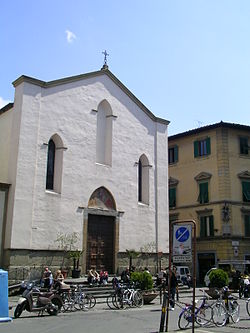| Church of Sant'Ambrogio (Chiesa di Sant'Ambrogio) | |
|---|---|
 The façade of Sant'Ambrogio | |
| Religion | |
| Affiliation | Roman Catholic |
| Province | Florence |
| Location | |
| Location | Florence, Italy |
 | |
| Architecture | |
| Type | Church |
Sant'Ambrogio is a Roman Catholic church in Florence, region of Tuscany, Italy. It is named in honour of St Ambrose.
